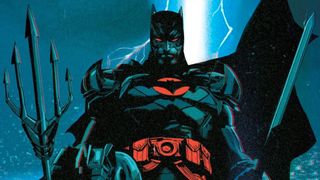The concept of alternate Multiverse 'Variants' (to borrow a Marvel term) of popular superheroes is becoming a hot button premise in both comic books and movies, with Batman, one of the characters who first popularized the trend, both in his Silver Age stories and by kicking off DC's Elseworlds imprint, getting the 'Variant' treatment as much as any hero.
Case in point, DC's just-announced Flashpoint Beyond comic book title, which focuses on Thomas Wayne, the alternate Batman of the world of DC's 2011 Flashpoint event. And over in the movies, Batman is getting a similar treatment with multiple versions of the character apparently scheduled to appear in Warner Bros.' upcoming Flash movie, which takes inspiration from Flashpoint itself.
But the idea of alternate versions of Batman goes back way farther than that - like we said, all the way back to the Silver Age of the '50s and '60s. And in that time, there have been plenty of 'Variant' versions of the Caped Crusader who have developed fan followings of their own.
So without further ado, we present the best alternate Batman 'Variants' from around DC's Omniverse.
Flashpoint Batman
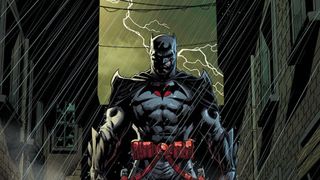
Due to the machinations of Zoom (the 'Reverse Flash'), an alternate timeline called Flashpoint was created where it was Thomas Wayne – Bruce Wayne's father – who survived an attack that left his son dead.
Thomas Wayne's Batman was much more violent than his son Bruce and was even willing to kill criminals in the line of duty. After being the only hero to believe Barry Allen's story about a timeline gone wrong, Thomas Wayne also discovers that his version of the Joker is actually his estranged wife, Martha Wayne.
Yikes.
The two come to grips with the consequences of aiding Barry in restoring the proper timeline, but not before Thomas leaves his son a note explaining Barry's actions and the events that lead to his death a second time.
Thomas Wayne-as-Batman has since reappeared in DC comics, becoming a relatively regular guest star in various big events such as the recent crossover 'The Button' and the summer 2021 Infinite Frontier series.
He'll return once again in Flashpoint Beyond, an upcoming sequel that focuses on Thomas and Bruce Wayne.
Red Son Batman

Jokingly referred to as "Batmankoff" by artist Dave Johnson in his design sketches, the Batman that appears in Superman: Red Son plays a small, but memorable role as a Russian anarchist working with American agents to destroy Superman.
Set in the Cold War, Red Son tells the story of a Superman raised in communist Russia as a government super-weapon. In the story, Batman teams with CIA agent Jim Olsen, scientist Lex Luthor, and a rogue KGB agent to kidnap Wonder Woman, Superman's lover.
When they risk capture, Batman commits suicide rather than wind up a lobotomized government pawn himself, proving that Batman is no one's pawn in any reality.
Battoman

In the late '60s, inspired by the American television show, Japan saw a Batman craze that swept the nation, leading to the publication of licensed Batman manga.
Since the bulk of the work was created by Japanese cartoonist Jiro Kuwata, most people, even at DC Comics, didn't realize these comics existed until Chip Kidd compiled much of it in his book Bat-Manga! in 2008. The adventures of 'Battoman,' as he's named in the westernized Japanese style, are obviously inspired not just by the Adam West/Burt Ward television show, but by other popular Japanese manga tropes.
Battoman fights robots, dinosaurs, and strange supervillains, some of whom have even come back across the Pacific to American Batman comics. Lord Death Man, a character inspired by an earlier, obscure American villain simply called 'Death Man' may be the best example of this, playing a key role in multiple arcs of Grant Morrison's Batman Incorporated.
Red Rain Batman

In Doug Moench and Kelly Jones' classic Elseworlds tale Batman & Dracula: Red Rain, Batman joins forces with a young vampire named Tanya to defeat the legendary vampire Dracula himself.
Quickly realizing that the only way to defeat Dracula is to become a vampire himself, Batman convinces Tanya to bite him, giving him all the powers of a vampire, along with all of his inherent skills.
Batman eventually defeats Dracula, sacrificing his own humanity to do so, but the story doesn't end there. Red Rain became a fan-favorite story, spawning sequels, spin-offs, and even incorporated into the DC Multiverse.
Kingdom Come Batman
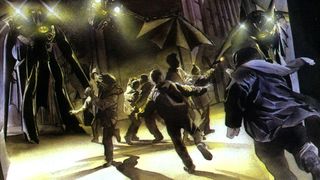
Mark Waid and Alex Ross's epic limited series Kingdom Come established an aging Batman who gave up all pretense of a secret identity years ago.
His body wracked by time and injury, Bruce Wayne now uses a veritable army of Batman robots to patrol Gotham City. When his old friend Superman comes out of retirement to stop the reign of terror of a younger generation of out-of-control heroes, Batman dons an exoskeleton suit and rejoins his old friend's fight in person.
Batman's Kingdom Come armor has become iconic, and the idea of Bruce Wayne leading a team of automatons and surrogates rather than hitting the streets himself has become a common trope among alternate timeline stories.
An adapted version of this Batman appeared in the CW's 'Crisis on Infinite Earths' crossover event, played in the flesh by none other than legendary Batman voice actor Kevin Conroy.
Gotham by Gaslight Batman

Considered by many to be the very first Elseworlds story, Brian Augustyn and Mike Mignola's Batman: Gotham By Gaslight tells the tale of a turn of the century Bruce Wayne, who dons the mantle of the be-goggled Batman when his friend Inspector Gordon shows him a series of strange murder cases. When it is discovered that Jack the Ripper has come to Gotham City, Bruce Wayne is framed for the murders, driving Batman to clear his own name and solve the grisly killings.
Gotham By Gaslight was widely acclaimed, inspiring the Elseworlds imprint that spawned numerous alternate stories of Batman, Superman, and various other characters. Its idiosyncratic version of Batman remains a fan favorite, occasionally being incorporated into multiverse events.
Batman Beyond
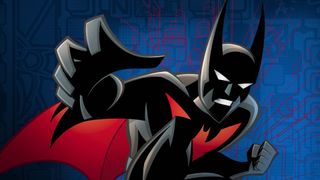
Batman: The Animated Series was hugely popular and inspired spinoffs for Superman and the Justice League. When B:TAS ended, producers Bruce Timm and Paul Dini were approached by Warner Bros. to fill its gap. When they asked what the pair had in mind, Timm said the first thing that came into his head: "Teenage Batman."
Working backward from that premise, Timm and Dini developed the story of Terry McGinnis, a high school student whose father is killed by corporate criminals, sparking a sequence of events the lead to McGinnis discovering a now-retired Bruce Wayne's secret history as Batman. Wayne takes McGinnis under his wing, giving him a high-tech suit with an array of gadgets and weaponry, and "coaching" Terry via a special communications link.
Over the course of three seasons, Batman Beyond gathered a devoted following and established Terry as a strong, unique version of Batman who faced off against not only his own rogues but some classic Bat-villains as well.
Batman '66
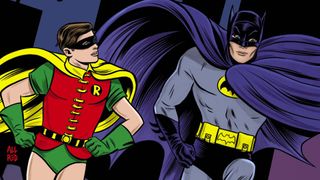
Spurred by the superhero revival of comic books' Silver Age, executives at ABC developed the widely polarizing Batman television series starring Adam West and Burt Ward as Batman and Robin, respectively, to cash in on the growing trend.
The '60's Batman TV show's reliance on comedic guest stars, campy plots, and hokey dialogue have made it a 'love it' or 'hate it' proposition. Those fans that can't get past a Batman whose adventures and attitude are radically different from those of mainstream comics revile the show, while those with an appreciation for the material as a product of its time and place form a devoted cult following.
Whatever your personal feelings about the show, there's no denying that it defined the public's perception of Batman for a generation, and lead to the revival not just of numerous Batman villains, including the Riddler and the Joker, but of a darker, more serious Batman in comic books as a reaction to the show's campy premise.
Frank Miller's Dark Knight
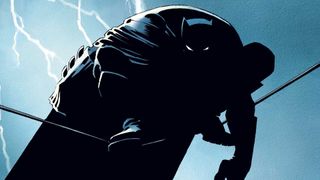
Frank Miller's Batman: The Dark Knight Returns was born of a quest for a return to form for Batman and his stories. Seeking to tell a grittier, darker Batman tale, Miller's DKR focuses on an older Bruce Wayne, forced out of retirement by a Gotham City that just keeps getting worse and worse, and the return of Two-Face, a villain thought to be cured of his criminal insanity.
DKR's Batman is more brutal, more direct, and much darker than many versions of the hero. While Miller's sequel, The Dark Knight Strikes Again is widely considered a pale effort next to the original story, DKR defined and reinvented Batman, and many would say comics in general, as a character and medium for older, more mature fans.
After an aborted prequel series called All-Star Batman and Robin the Boy Wonder, in recent years Miller has turned his Dark Knight saga into a more regular series with various sequels he's been involved with, with other writers and artists.
Batman: The Animated Series

With major artistic contributions from Bruce Timm and Paul Dini, Batman: The Animated Series focused on a version of Batman that was not unlike the mainstream version seen in comic books, but which sought to streamline many of the various tropes, stories, and concepts that had taken root at different eras of the character's history into a single, accessible vision of the caped crusader.
Reinventing and revitalizing many of Batman's classic nemeses, as well as Batman himself, Batman: The Animated Series presented a vision of Batman that was at once exciting, colorful, mysterious, and dark, successfully folding the numerous conceptions of the character into a total package.
For many fans, the animated series was their first introduction to Batman, and even some creators, like former Batman scribe Devin Grayson, found their way to comics with the show's influence. While it may not be as radical a reinvention or re-imagining of Batman as some on this list, Batman: The Animated Series is considered by many to be the definitive version of the character, and it even spawned an entire animated universe of alternate DC continuity portrayed in several shows.
